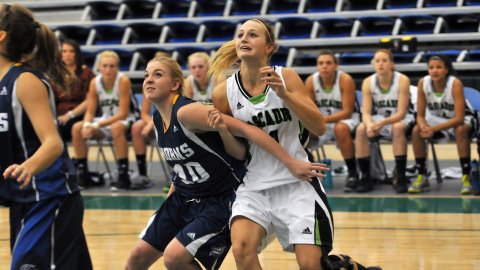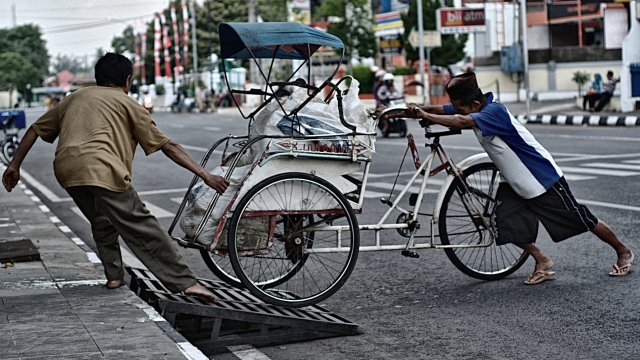Breaking Down How We Talk About Men’s and Women’s Basketball

How does the media talk about men’s and women’s sports? Quite differently, according to Nicholas Subtirelu, a Ph.D. student in applied linguistics at Georgia State University. In a blog post, Subtirelu describes how he combed through articles on NCAA.com to see how the site reported on Division I men’s and women’s basketball.
“I went to NCAA.com and downloaded all of the articles for Division I men’s and women’s basketball from the past 10 years.”
The first thing he notes is the disparity in the amount of content between the male and female athletes. He found 3,451 articles on the site concerning men’s basketball and 1,825 articles talking about women’s games.
He then charted the words that appeared frequently in each gender’s respective articles, taking out proper names of coaches, teams, and players. Subtirelu was much more interested in how writers presented the players — what kinds of descriptors were used to talk about the different genders.
The top five keywords for women were: her (possessive), herself, her, she, girls, and women. Whereas the men were described with words, such as pound, guy, dunk, stadium, and him.
The word “pound” is of particular interest. Subtirelu found numerous instances of men’s heights and weights being mentioned in articles, whereas only women’s heights would be written in a post. In his blog post, he debates why authors would omit women’s weights:
“The authors of these articles are probably responding to a wider taboo about women’s weight when they omit female players’ weights. However, when men are described according to their weight, do they not often appear more powerful and foreboding? Is any perception that female athletes are less powerful or that their competitions are less intense or physical reinforced by the absence of discussion of their weight? I would also love to know what female athletes themselves feel about this.”
Another point of interest in this study was the difference between the use of gender-specific words. Women saw more mentions of their gender, including the word “girl,” whereas no mention of the word “boys” was in the top 20 word list for men, and there were fewer gender-specific keywords.
If you want to read more about Subtirelu’s linguistic study, including a full list of the top 20 keywords, check out his blog post on Linguistic Pulse.
Photo Credit: University of the Fraser Valley/Flickr





